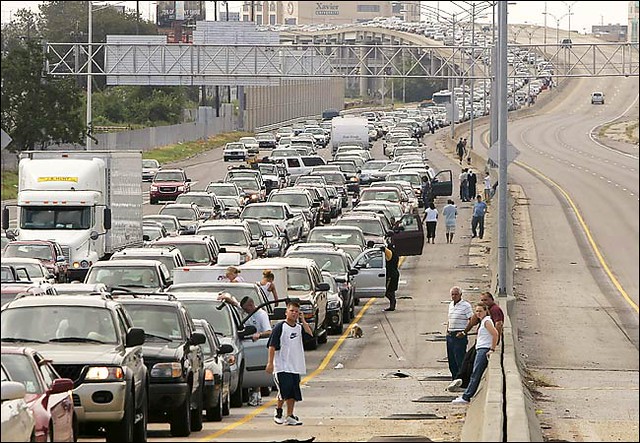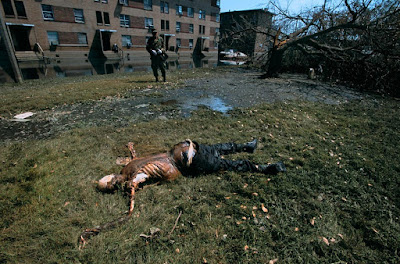Tracking Hurricane Idalia threatening Florida and the South East this week.
Idalia, the first tropical storm of the season, has been upgraded to a hurricane and should slam into the Florida Panhandle on Wednesday as a Category 3 storm bringing high winds, possibly spawning tornadoes, and most devastatingly causing storm surges along a wide stretch of shore of up to 12 feet. The storm will track northeast just inland in Georgia and the Carolinas weakening to a Category 1 and then back to a tropical storm before turning east into the Atlantic. It will bring heavy rains, local flash flooding, and a storm surge along the East coast of up to 4 feet. Idalia will be a major hurricane causing widespread damage and lengthy power outages. Evacuations have already begun. All of which brings to mind an earlier storm that wrecked its devastation to the Western Gulf from Texas to Pensacola.
As seen dispassionately from space, Hurricane Katrina maded landfall at New Orleans.
On August 29, 2005 Hurricane Katrina slammed into the Gulf Coast with the eye just east of New Orleans. Winds had diminished and the storm had been downgraded from a Category 4 to a Category 3 and there was some hope that the city and surrounding Parishes might be spared the destruction predicted earlier in the week. Although wind damage was severe, a lot of folks breathed deeply after the brunt of the storm moved past.
But the storm surge sent as much as 15 feet of water inland flooding the low lying coast from the Texas border to nearly Pensacola. It pushed up the Mississippi and into Lake Pontchartrain. Within a few hours the levy system protecting the city broke in several places and water inundated most of the city. Especially hard hit were the low lying neighborhoods along the canals and directly under the levies, including the largely Black and impoverished 8th and 9th Wards. By 11 p.m. Mayor Ray Nagin described the loss of life as significant with reports of bodies floating on the water throughout the city.
As Katrina neared those with vehicles clogged high evacuation routes. The storm still caught many on the road. But no provision was made for non-drivers and the elderly who were stranded in the city.
As horrible as the situation was, it was only the beginning. Evacuation orders had encouraged many of those with vehicles to flee north. But the highways were soon clogged and those late to leave were trapped. No plans had been made for the hundreds of thousands of city residents without transportation, or the aged and ill. The poor were essentially trapped in the city. And as they drowned, talking heads on television scolded them for not heeding the evacuation orders.
A mother and her children struggled through flooded streets looking for refuge after the storm.
The story of the immediate misery of the next few days has been told and retold and is far too vast to be recounted here. Suffice it to say the disaster unmasked incompetence at every level of government compounded by a blasé racism eager to blame the victims. The response by the Federal Emergency Management Agency (FEMA), headed by political toadies and lickspittles, became a national scandal. But it was the inevitable result of George W. Bush’s administration, which had as its highest goal to prove that government is inherently incapable of managing things efficiently.
A decaying body found after flood waters finally receded near a public housing development. Just another "recalcitrant defier of evacuation orders" according to Fox News.
The disaster created a diaspora. Eighty percent of the New Orleans population fled. Five years later less than half had returned. And much of the city, particularly the Black Wards away from the restored tourist areas, remained a wasteland.
The Black lower 9th Ward after the storm. While tourist areas and white neighborhoods have made a recovery, much of this is still a wasteland and nearly half of dispossessed residents have been able to return to new or rebuilt homes. A virtual ethnic cleansing.
The youth group of my church, then known as the Unitarian Universalist Congregation of Woodstock, spent a week there in July 2010, nearly five years after the storm, doing service projects. They brought back video and photographic evidence of the distressing situation. There will be work rebuilding and restoring homes in those districts for hundreds of youth groups for years to come.
When historians look back on the disaster and its long aftermath years from now, they may well conclude that this was the moment when the traditional cocky confidence of American exceptionalism bit the dust and the Empire began it precipitous decline.






No comments:
Post a Comment